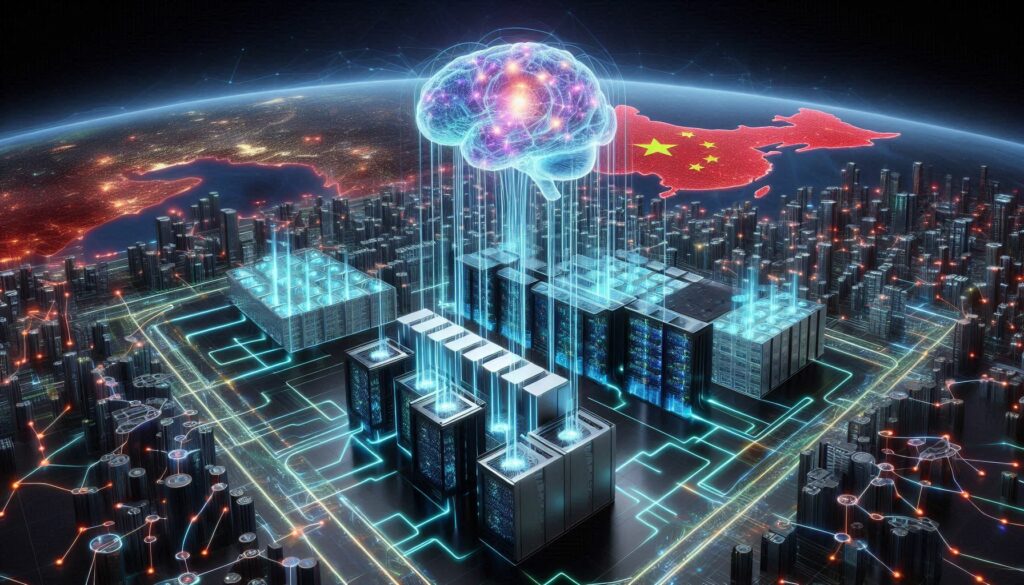
AI CERTS
7 months ago
China Makes Breakthrough in AI: Successfully Trains Generative AI Across Multiple Data Centers and GPU Architectures
China has achieved a groundbreaking milestone in artificial intelligence (AI) by developing a generative AI (GAI) model that operates across multiple data centers using different GPU architectures. This remarkable feat, confirmed by industry analyst Patrick Moorhead, positions China as the first country to accomplish such a complex task one that significantly advances its AI capabilities amidst the ongoing technological restrictions it faces.

Overcoming the Challenges of Sanctions
In recent years, China has been subjected to U.S. sanctions that prevent the acquisition of the most advanced AI chips. Nvidia, for instance, has been restricted from selling its high-performance GPUs, like the A100, to Chinese companies. To mitigate these sanctions, Nvidia created the H20 AI chip, a less powerful alternative that complies with U.S. export regulations. However, even these chips could soon face further restrictions, adding more uncertainty to China’s AI development landscape.
Despite these challenges, Chinese researchers have been resourceful. They have developed a method to combine GPUs from different manufacturers into a single AI training cluster. By doing so, they can merge their limited supply of high-end, restricted chips with less powerful, locally available GPUs, such as Huawei's Ascend 910B. Historically, this blending of GPU architectures across multiple data centers has led to significant drops in efficiency and performance, but China appears to have found a way to address these issues.
The Significance of Multi-Data Center AI Training
Training AI models across multiple data centers with different GPU architectures is no small task. Typically, AI systems rely on highly specialized, homogeneous computing environments to optimize performance and ensure efficient data processing. Mixing GPUs from different manufacturers, with varying architectures and processing capabilities, complicates this process. Achieving such an accomplishment not only indicates China's technical prowess but also its ability to innovate and adapt in the face of external limitations.
This breakthrough allows China to sidestep some of the limitations imposed by U.S. sanctions and continue its aggressive push toward AI leadership. The ability to integrate various hardware configurations into one cohesive AI training system offers a new pathway for developing advanced AI without relying solely on high-end chips like Nvidia’s A100 or H100.
A New Era for Chinese AI Ambitions
This achievement underscores China's relentless ambition to stay competitive in the global AI race despite its constrained access to cutting-edge hardware. Chinese tech companies and research institutions, faced with the uncertainty of future chip access, have been exploring alternative solutions to ensure continued progress in AI research and development. The integration of multiple GPU architectures into a single model demonstrates the lengths to which China is willing to go to safeguard its AI aspirations.
While details about the generative AI model itself remain scarce, the breakthrough signals a significant step forward in China’s ability to develop and scale advanced AI systems. This development could be a harbinger of future innovations, as Chinese researchers are likely to continue finding creative solutions to overcome the challenges posed by geopolitical tensions and sanctions.
Looking Ahead: The Future of AI Development in China
As the global AI race intensifies, the success of this multi-data center AI model shows that China is well-prepared to adapt to the changing landscape. The country's ability to blend GPUs from different manufacturers into a unified system not only allows it to optimize existing resources but also reduces reliance on U.S. technology, potentially making it more self-sufficient in the long run.
With continued innovation, China is likely to further refine this approach, potentially revolutionizing how AI models are trained on a global scale. If China can maintain its momentum, the U.S. and other global leaders may face increasing competition, as Chinese AI capabilities continue to grow despite sanctions.
In conclusion, China’s breakthrough in training a generative AI model across multiple data centers is a major step forward in the nation’s AI development. By overcoming the challenges of hardware limitations and sanctions, China has demonstrated its resilience and resourcefulness in the global AI race. As the geopolitical landscape continues to shift, this development underscores China’s commitment to pushing forward AI innovation, solidifying its role as a formidable player on the world stage.
Source: China makes AI breakthrough.